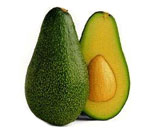MRI Bests SPECT for Heart Disease Diagnosis
Posted by: admin on: January 19, 2012
Cardiac MRI is more accurate at confirming or ruling out coronary heart disease than stress myocardial perfusion imaging with single-photon emission CT (SPECT), researchers found in a prospective real-world trial.
-Team@CMHF
- Sensitivity was significantly better with cardiac MRI than with SPECT at 86.5% versus 66.5% (P<0.0001), reported John P. Greenwood, PhD, of the University of Leeds, England
The SPECT approach has become the most widely used test for assessing myocardial ischemia but has some drawbacks, including exposure to ionizing radiation, the researchers pointed out.
- These findings support the wider adoption of cardiovascular magnetic resonance for coronary heart disease diagnosis and its inclusion in evidence-based clinical management guidelines, they argued in the paper.
- Better diagnostic accuracy has to be balanced against cost and availability issues with cardiac MRI, he noted.
- Diagnosis of coronary artery disease alone is not sufficient to determine the need for revascularization.
- To show value, advances in imaging must be coupled with enhanced patient well-being or a reduction in unnecessary downstream testing and procedures.
- The Clinical Evaluation of Magnetic Resonance imaging in Coronary heart disease (CE-MARC) study included 752 patients with suspected angina pectoris and at least one cardiovascular risk factor who agreed to get all three diagnostic tests:
- Cardiac MRI, which included rest and adenosine stress perfusion, cine imaging, late gadolinium enhancement
- SPECT imaging, which included gated adenosine stress and rest using 99mTc tetrofosmin
- Invasive x-ray coronary angiography
- Overall, 39% of the patients showed significant coronary heart disease on angiography.
- Unlike sensitivity and negative predictive value, other measures of diagnostic accuracy didn’t differ significantly between the noninvasive imaging methods, though numerically higher with cardiac MRI.
- Specificity was 83.4% with cardiac MRI compared with 82.6% with SPECT (P=0.916).
- Positive predictive value was 77.2% with cardiac MRI versus 71.4% with SPECT (P=0.061).
- Because coronary angiography using cardiovascular magnetic resonance is neither universally available nor feasible for all patients, it is noteworthy that the relative diagnostic accuracy of [cardiac MRI] was not diminished when the noninvasive coronary angiographic data were eliminated from the analysis
- The advantage of stress perfusion cardiac MRI was seen in diagnosing both single and multivessel coronary artery disease compared with SPECT, with area under the curve values of 0.87 versus 0.71 and 0.91 versus 0.77 (P<0.0001 for both).
- Greenwood’s group cautioned that their comparison results need to be considered in the context of published SPECT data, which are heterogeneous for population, radioisotope tracer, mode of stress, and protocol.
- Limitations also included a possible lack of generalizability from the homogeneous group of white Northern Europeans without prior bypass surgery studied and that all patients were seen at a single center with high cardiac MRI and SPECT imaging volume
For further reading log on to
http://www.medpagetoday.com/Cardiology/AcuteCoronarySyndrome/30369
Search
- drchasrani: Difficult to get such a data, authenticated at that. Try Times of India online library
- rakesh pore: hi, where can i get genuine information about "10 most common drugs sold in india?" i want it for a local project
- nilesh dutta: sir, Plz give detail about MBA Sports Management Thanks and Regards


Leave a Reply